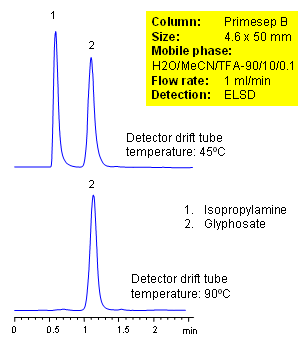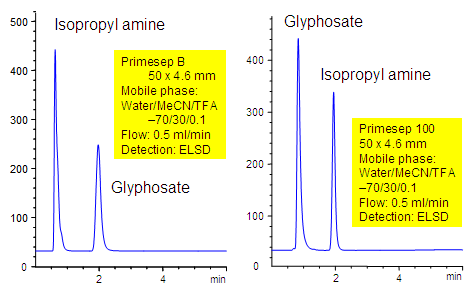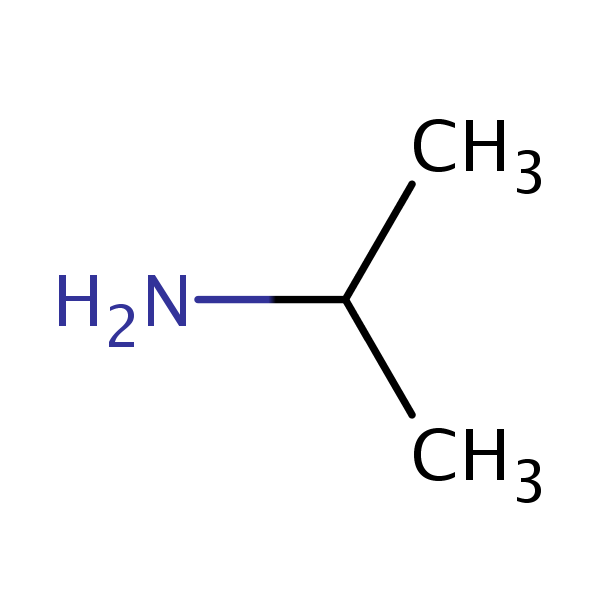| CAS Number | 75-31-0 |
|---|---|
| Molecular Formula | C3H9N |
| Molecular Weight | 59.112 |
| InChI Key | JJWLVOIRVHMVIS-UHFFFAOYSA-N |
| LogP | 0.26 |
| Synonyms |
|
Applications:
HPLC Separation of Isopropylamine and Glyphosate
December 6, 2007

| Column | Primesep B, 4.6×50 mm, 5 µm, 100A |
| Mobile Phase | MeCN/H2O |
| Buffer | TFA |
| Flow Rate | 1.0 ml/min |
| Detection | ELSD |
| Class of Compounds |
Insecticide, Herbicide, Fungicide, Hydrophobic, Ionizable |
| Analyzing Compounds | Glyphosate, Isppropylamine |
Application Column
Primesep B
The Primesep family of mixed-mode columns offers a wide variety of stationary phases, boasting unprecedented selectivity in the separation of a broad array of chemical compounds across multiple applications. Corresponding Primesep guard columns, available with all stationary phases, do not require holders. SIELC provides a method development service available to all customers. Inquire about our specially-tailored custom LC-phases for specific separations.
Select optionsIsopropylamine

Separation of Glyphosate by Cation Exchange and Anion Exchange
July 6, 2003

Primesep 100 separates a mixture of glyphosate and isopropylamine by HPLC using cation exchange as a retention mechanism. The peak order of this mixture is reversed on a Primesep B column which uses anion exchange. This combination offers an alternative to ion chromatography for the simultaneous analysis of complex herbicide mixtures. Glyphosate, other phosphonomethyl herbicides, and their amine salts can be analyzed with a mobile phase mixture of water, acetonitrile (MeCN, ACN) and trifluoroacetic acid (TFA) and evaporative light scattering detection (ELSD).
| Column | Primesep B, Primesep 100, 4.6×50 mm, 5 µm, 100A |
| Mobile Phase | MeCN/H2O |
| Buffer | TFA |
| Flow Rate | 0.5 ml/min |
| Detection | ELSD |
| Class of Compounds |
Insecticide, Herbicide, Fungicide, Hydrophobic, Ionizable |
| Analyzing Compounds | Glyphosate, Isppropylamine |
Application Column
Primesep 100
The Primesep family of mixed-mode columns offers a wide variety of stationary phases, boasting unprecedented selectivity in the separation of a broad array of chemical compounds across multiple applications. Corresponding Primesep guard columns, available with all stationary phases, do not require holders. SIELC provides a method development service available to all customers. Inquire about our specially-tailored custom LC-phases for specific separations.
Select optionsPrimesep B
The Primesep family of mixed-mode columns offers a wide variety of stationary phases, boasting unprecedented selectivity in the separation of a broad array of chemical compounds across multiple applications. Corresponding Primesep guard columns, available with all stationary phases, do not require holders. SIELC provides a method development service available to all customers. Inquire about our specially-tailored custom LC-phases for specific separations.
Select optionsIsopropylamine




